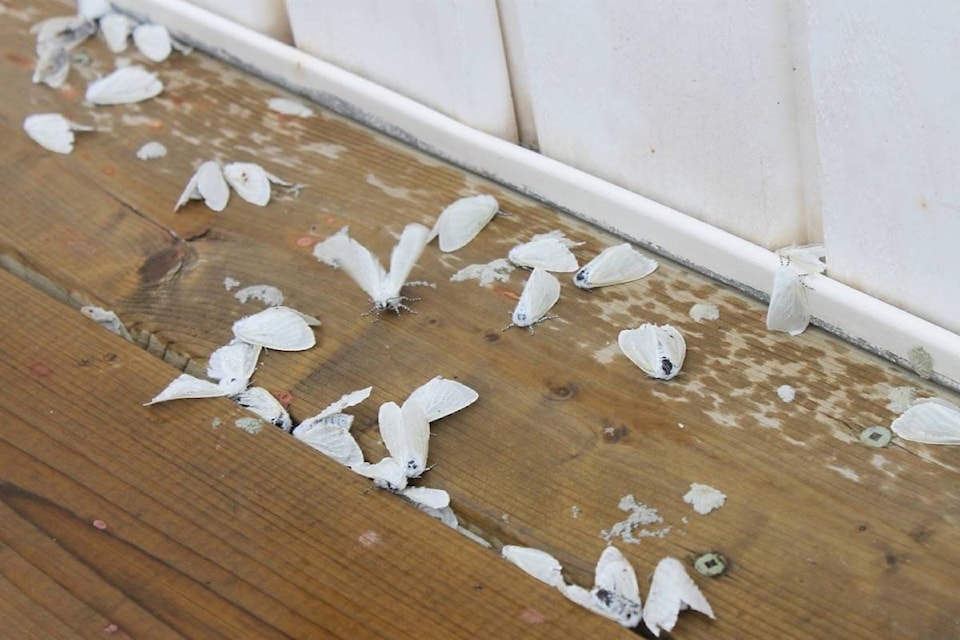Over 5000 hectares of deciduous forests are affected by satin moths in the Lakes Timber Supply Area (TSA), according to the provincial government’s latest forest health aerial overview survey.
Satin moths are capable of completely defoliating trees. Severe defoliation in several consecutive years can result in reduced radial growth of stems, branch mortality, and some tree mortality.
While 5221 hectares of deciduous forests were affected in the Lakes TSA, 64 hectares were affected in the Morice TSA.
According to the Ministry of Forests, Lands, Natural Resource Operations & Rural Development, there has not been any significant mortality noted in aspen stands so far, and no further actions are planned at the moment.
“Aspen is a very resilient tree species, and can withstand severe defoliation for several years before any mortality occurs,” said the ministry in a statement. “It also has the ability to put out new leaves later in the year if it is severely defoliated.”
“If the infestation continues, and causes significant mortality, then further actions may be considered,” continues the statement. “It is hoped that this outbreak will collapse on its own.”
Outbreaks of satin moths usually collapse after a year or two.
“The ministry will continue to monitor the situation through the annual aerial overview survey.”
While the Morice TSA area is only seeing severe defoliation (bare branches, more than 50 per cent total defoliation, many trees completely stripped), the Lakes TSA area is experiencing a mixture of low (some branch tip and upper crown defoliation, barely visible from the air), moderate (thin foliage, top third of many trees severely defoliated, some completely stripped, easily visible from the air) and severe.
Last summer, locals noticed a significant number of satin moths in �������� Lake. This type of moth is not usual for the Lakes District, however. The insect was introduced into North America from Europe, being first detected near Boston, Massachusetts, and in British Columbia in 1920.
“It has been extending its range over the years, though, and it is not very surprising to hear that it has reached the Lakes District,” explained Lisa Poirier, an entomologist at the University of Northern British Columbia, earlier this year.
There have been several infestations since this insect was first discovered in B.C., but none of them have resulted in widespread aspen mortality.
“Often, defoliated trees look dead, but will recover quite nicely later in the season or the following year, so don’t write them off too quickly,” said Poirier. “Aspens are reasonably good at tolerating that kind of damage, unless it is quite severe, prolonged, or repeated over several years.”
According to Natural Resources Canada, there is no practical way of preventing access of satin moths to trees.
The Lakes TSA extends from Tweedsmuir Provincial Park in the south to the Tildelsy watershed in the north. It includes �������� Lake, Decker Lake, François Lake, Grassy Plains and Danskin.
The Morice TSA extends from Babine Lake in the north to Ootsa and Whitesail Lakes in the south. The main community in the TSA is Houston, while the remainder of the population lives in smaller communities such as Topley and Granisle.
newsroom@ldnews.net
Like us on and follow us on .



